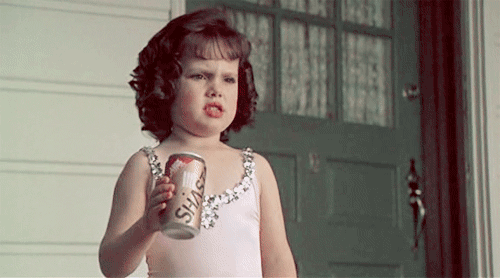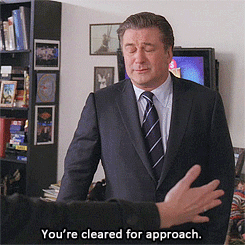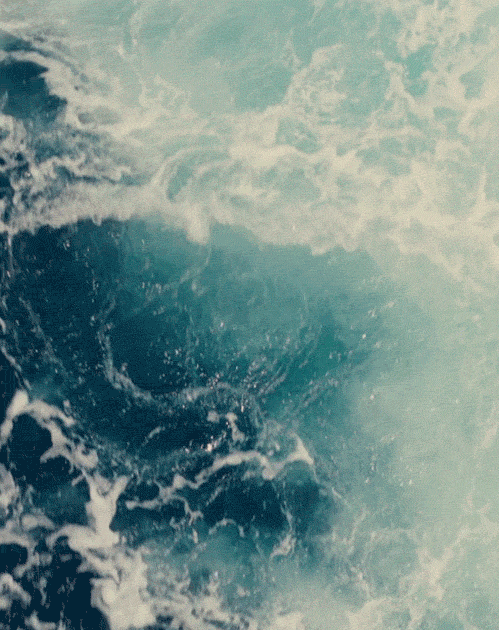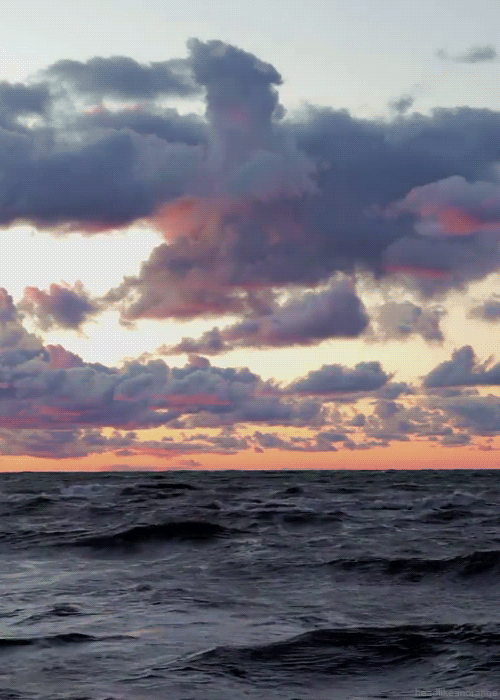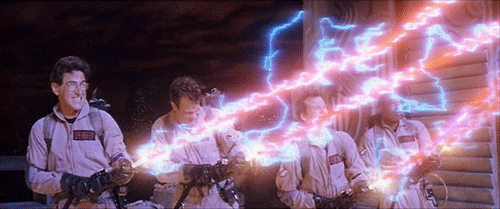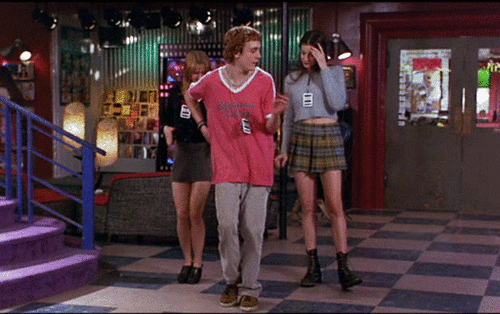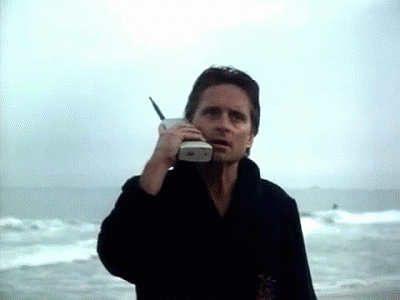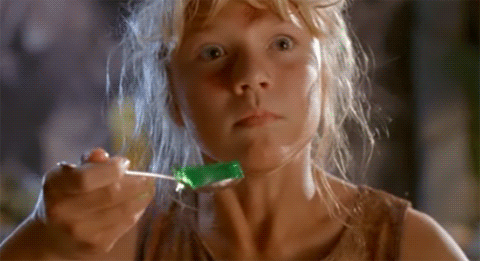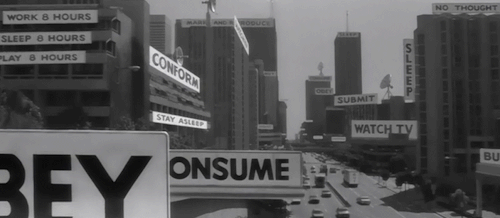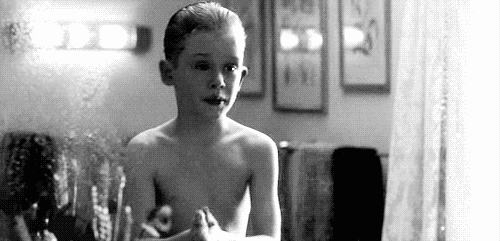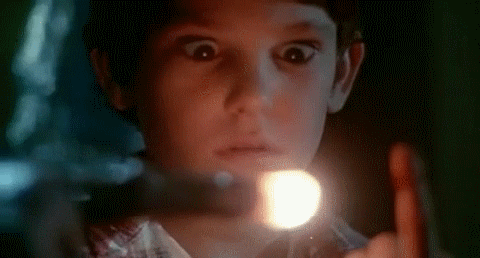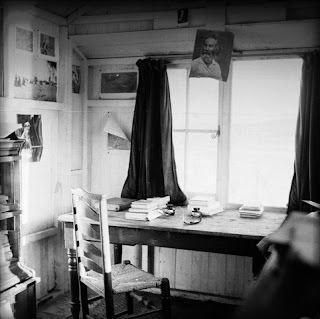I've been blogging here since 2008, but the time has come for me to say "bye bye Blogger" and "hello Square Space".
You can now find me:
Here: https://camilla-grey.squarespace.com/
If you're following me on Feedly (or other readers), please be sure to update your settings!
I'm admittedly sad to leave. Blogger (or Blogspot as it once was) has served me well for five years but it's failed to keep up aesthetically. I find the UI simple and it syncs well with all my other Google products, but it just looks... tired. My hunch is that Blogger will get incorporated into Google+ in a bid to make Google+ happen. And I wish them luck with that. But for now and my needs and $10 a month, Square Space seems like a good move.
So this is over and out here. See you on the other side of the Internet for more ramblings.
Cx
Wednesday, November 06, 2013
Wednesday, October 30, 2013
Rage against the machine
I try to be a good person. I look for the best in people, I see the bright side, I care how others feel and, if Stoke Newington wasn’t overrun with yuppies, I would totally help old ladies cross the street. But lately I’ve been getting angry with people.
Not random strangers but the hairdresser who kept me waiting for 30 minutes without acknowledging or apologising; the coffee shop owner who charged me £10.70 for two coffees, a tiny piece of cake, an unacceptably long wait and a huge amount of attitude; the sales assistant at M.A.C who pushed me out of her way, and the other sales assistant at Liberty’s who pushed my Mum out of her way; and the independent furniture maker who was so unpleasant when it came to organising delivery that I cancelled the order and took my 3-month’s worth of saving elsewhere.
Believe me, I’ve really challenged myself to be sure that this isn’t just First World Problems. Certainly I have high standards and expect value for money, but I was raised on the strategy of “hard on the issue, soft on the relationship” because we’re all just people at the end of the day. And yet, I am increasingly shocked at the appalling levels of customer service from both independent and chain retailers - businesses which make up the languishing British highstreet and which we're trying to preserve.
When shops are fighting against online retailers to increase footfall and boost spend in-store, it seems odd that so few are leveraging the one thing they can offer over a website - real, friendly, helpful, personal interaction. In fact, emotion and relationships are so important in the so-called ‘path to purchase’, that many of the world’s greatest brains are currently employed in making computers behave more like us.
I fear, however, that I have become so used to things being instant and personalised and “Hi Camilla, because you bought that, you might like this!” that I’ve forgotten how long things take to do and make, or how busy and crowded it can be in the West End. Not only have I forgotten, but the purveyors of haircuts, coffee, clothes and furniture have too. Is it really that hard to apologise for keeping someone waiting? Or ask politely for someone to please move aside? Won't we, as people, generally have a better time if we're all lovely and helpful to one another?
I adore technology and I think about how brands can use digital tools and platforms every day in my work, but I’d hate to see it lead to a world where I yell in public about a piece of cake. I want technology to accentuate our human-ness, to make us take pride in it and treasure it. Let machines be mean - they’ll be great at it.
Snaps to the wonderfully friendly people of The Albion Pub, Superdrug in Angel, and Barclays telephone banking for bucking the trend.
Not random strangers but the hairdresser who kept me waiting for 30 minutes without acknowledging or apologising; the coffee shop owner who charged me £10.70 for two coffees, a tiny piece of cake, an unacceptably long wait and a huge amount of attitude; the sales assistant at M.A.C who pushed me out of her way, and the other sales assistant at Liberty’s who pushed my Mum out of her way; and the independent furniture maker who was so unpleasant when it came to organising delivery that I cancelled the order and took my 3-month’s worth of saving elsewhere.
Believe me, I’ve really challenged myself to be sure that this isn’t just First World Problems. Certainly I have high standards and expect value for money, but I was raised on the strategy of “hard on the issue, soft on the relationship” because we’re all just people at the end of the day. And yet, I am increasingly shocked at the appalling levels of customer service from both independent and chain retailers - businesses which make up the languishing British highstreet and which we're trying to preserve.
When shops are fighting against online retailers to increase footfall and boost spend in-store, it seems odd that so few are leveraging the one thing they can offer over a website - real, friendly, helpful, personal interaction. In fact, emotion and relationships are so important in the so-called ‘path to purchase’, that many of the world’s greatest brains are currently employed in making computers behave more like us.
I fear, however, that I have become so used to things being instant and personalised and “Hi Camilla, because you bought that, you might like this!” that I’ve forgotten how long things take to do and make, or how busy and crowded it can be in the West End. Not only have I forgotten, but the purveyors of haircuts, coffee, clothes and furniture have too. Is it really that hard to apologise for keeping someone waiting? Or ask politely for someone to please move aside? Won't we, as people, generally have a better time if we're all lovely and helpful to one another?
I adore technology and I think about how brands can use digital tools and platforms every day in my work, but I’d hate to see it lead to a world where I yell in public about a piece of cake. I want technology to accentuate our human-ness, to make us take pride in it and treasure it. Let machines be mean - they’ll be great at it.
Snaps to the wonderfully friendly people of The Albion Pub, Superdrug in Angel, and Barclays telephone banking for bucking the trend.
Monday, September 30, 2013
Suddenly I see
On a train back into London last week, I sat next to a blind couple and their guide dog. It was interesting to watch them complete tasks we sighted people take for granted - storing their bags, settling into their seats, and ensuring their dog wasn’t in the way of people in the aisle. As we approached the city, they began to discuss their immediate plans upon arrival. The woman suggested they find a bench and use BlindSquare to - as she put it - “see where they were”. I’d not previously heard of BlindSquare, which is an award-winning app that “makes use of the latest features available in smartphones to aid the blind and visually impaired in their daily lives”. According to the website, BlindSquare uses information from Foursquare and Open Street Map to make spoken recommendations for the user. As a blind interviewee was recently quoted in the New York Times, “The belief was the tools for the visually impaired must have a tactile screen, which, it turns out, is completely untrue”.
Of course, noone who works in branding or advertising can ever observe new or unusual human behaviour without immediately wondering how they’ll be able to incorporate it into a PowerPoint presentation. So, while watching this couple disappear into the crowds at London Bridge, I was imagining what a non-visual world meant for brands. If we removed sight, what could we see?
It is now commonly understood that a modern brand is built on experience; how it feels to use and interact with. And yet it is undeniable that a great deal of our affinity with brands is based on how they look - the emotions we associate with the experience of the brand often prompted by seeing the logo or visiting it online or in-store. Even with brands we are unfamiliar with, we can use subtle visual signals such as naming, typeface or colour palette to determine whether it might be something we’re interested in. I’ve written previously about how lost I found myself in Havana - the land without brands. Indeed, without sight the visual signals that help us find our way, discover new things and even keep us safe disappear, and brands lose their power. For the couple on the train, BlindSquare provides vocal prompts to help them navigate London, but what else could a brand do to assert their presence? How could a brand use smell, touch, sound and even taste to quickly prompt that comforting feeling of recognition not just in blind people but in everyone?
It is now commonly understood that a modern brand is built on experience; how it feels to use and interact with. And yet it is undeniable that a great deal of our affinity with brands is based on how they look - the emotions we associate with the experience of the brand often prompted by seeing the logo or visiting it online or in-store. Even with brands we are unfamiliar with, we can use subtle visual signals such as naming, typeface or colour palette to determine whether it might be something we’re interested in. I’ve written previously about how lost I found myself in Havana - the land without brands. Indeed, without sight the visual signals that help us find our way, discover new things and even keep us safe disappear, and brands lose their power. For the couple on the train, BlindSquare provides vocal prompts to help them navigate London, but what else could a brand do to assert their presence? How could a brand use smell, touch, sound and even taste to quickly prompt that comforting feeling of recognition not just in blind people but in everyone?
Wednesday, August 21, 2013
What is Britishness?
I'm not ashamed to admit that I'm quite partial to a spot of BBC Radio 4 of an evening. It's informative, erudite and distinctly British. So you can imagine how much I enjoyed the first instalment of Rory Bremner's new show, "One Question Quiz", which asks his panellists (and his impersonated characters) to riff off just a single question. The first episode asked "What is Britishness", and an answer was given that was so perfect I had to transcribe it here.
'We've always been a country that turns its face to the world and goes, "I'll have that, I'll have that, I'll have you, I'll eat that, I'll put that on my living room floor, I'll have two of those, Timmy needs a new pair of tusks for school, so I'll shoot that and if you don't do what I say I'll whack you with this, infect you with this and and threaten you til you believe in that. I'll have a gin and tonic on the veranda sharpish or I'll open fire on you in a confined space and never apologise for it and I'll have a side order of all your natural resources. Now answer our phones and pretend you're called John!"'
Wednesday, July 10, 2013
"My Imaginary Well-Dressed Toddler" - the interview
They say that if you don't ask, you don't get. So I asked Tiffany Beveridge if she would tell me more about creating Pinterest sensation "My Imaginary Well-Dressed Toddler", and she said yes! Tiffany's eye for imagery, unique turn of phrase and biting satire have made her amongst the first "social media stars" on the Pinterest platform, and I was fascinated to understand more about how it came to be and how she felt about her success.
What form of writing do you currently do?
I've been working as a freelance copywriter for the past seven years. I've written everything from catalogs to radio ads to product packaging and blogs. It's a lot of variety and a lot of fun.
How is creating content for Pinterest different to other formats (long form, Twitter etc)?
For me it was very natural but also very accidental, if that makes sense. I wasn't out to prove a point or do something new, I just started building a story to entertain myself. There isn't a character limit like Twitter, but I try to keep the captions short. I try to pack in as much "story" in as few words as possible and give a new twist on the details of the photo. And of course, the photo is a huge part of the content. I try to write captions that make you look at the photo in a totally new way.
Where did the idea come from?
I have two boys, so I never got to dress a little girl. I had always imagined that to be a lot of fun. When Pinterest came around, it gave me an avenue to explore that little fantasy. But then, of course, my imagination and sense of humor got the better of me.
How would you describe the "voice" you have created for it?
Quinoa and her mother are both very strong, Type A personalities. I am anything but Type A, so the voice for both is a lot of stuff I would never say or do. That's the great thing about being a writer; you can try on different voices as easily as trying on clothes.
Who were you writing it for? Who was your imaginary audience?
I have to credit my sister Leslie. She loved the idea from the beginning and would ask me for updates. I really had no other audience in mind. It was very much a silly sideshow, kind of a creative release I'd engage in every now and then. My husband and kids didn't even know about it until things took off.
What has been the most surprising thing about its success?
I think I'm most surprised at the broad appeal. There is quite a spectrum of people enjoying the board. There's one end that is revelling in the social commentary and the other end that is laughing, but wondering where they can buy the clothes for their own kids.
How do you see it developing?
I've always dreamed of writing a book, so that's what I'm pursuing first. But the great thing about Quinoa is that she thinks big. I'll try to follow her lead and go wherever she wants to take me!
What has it taught you about Pinterest and/or what opportunities do you see for satire on it?
I've said before that Pinterest has always been about storytelling. Explore somebody's boards and you'll have a good understanding of who they are as a person, or who they hope or wish to be. My board just took that storytelling down a more overtly fictional path. It's fun to think about following a specific story line pin by pin. I hope there will be more boards that explore it as a fictional medium.
Who would be Quinoa's Instagram counterpart?
I think the obvious answer is Alonso Mateo. That is one stylish kid and he's the real deal!
If Quinoa started a Board about you, what would it be called?
Probably My Would-Be Writer Mom or An Imaginary Wardrobe for My Clearance Rack Mom.
Wednesday, June 26, 2013
Can't Understand New Technology #2
The second issue of Can't Understand New Technology comes out (officially) today. Thanks to my co-founder Steve Price, our superstar contributors, and a power gang of financial backers it continues to be a publication I am immensely proud of.
The launch issue of Can't received a great response from its readers, with Design Week terming it "a lot of swearing with a fair bit of insight". We self-financed both the printing and distribution - circulating just 100 copies to the great and good of London, San Francisco and New York. It took a little longer than expected, but we bring you Issue 2 today thanks to funding via our network on Indiegogo, and with the support of the School of Communication Arts, whose students have created "ads" across the paper. To you all, big respect and thanks from the bottom of my heart.
So, what's in it? Amongst other thought-provoking pieces, we bring you a killer opening article from none other than the bearded darling of Shoreditch - Nik Roope, more bleeding edge ranting from the sartorially advanced Harry Woodrow, and wild futuristic ponderings from Panja Gobel. The ladies of Digit - Laura Tan and Alexis Cuddyre - have created a controversial infographic, Tony Hymes pursues Steve Jobs in Hell, and Ellen Turnill solves more reader problems. In essence, it's a page turner.
If you received a copy today - of which there are very limited numbers - please show it to all your good looking and influential friends, and give us a shout out using the hashtag #cantunderstandnewtechnology.
The launch issue of Can't received a great response from its readers, with Design Week terming it "a lot of swearing with a fair bit of insight". We self-financed both the printing and distribution - circulating just 100 copies to the great and good of London, San Francisco and New York. It took a little longer than expected, but we bring you Issue 2 today thanks to funding via our network on Indiegogo, and with the support of the School of Communication Arts, whose students have created "ads" across the paper. To you all, big respect and thanks from the bottom of my heart.
So, what's in it? Amongst other thought-provoking pieces, we bring you a killer opening article from none other than the bearded darling of Shoreditch - Nik Roope, more bleeding edge ranting from the sartorially advanced Harry Woodrow, and wild futuristic ponderings from Panja Gobel. The ladies of Digit - Laura Tan and Alexis Cuddyre - have created a controversial infographic, Tony Hymes pursues Steve Jobs in Hell, and Ellen Turnill solves more reader problems. In essence, it's a page turner.
If you received a copy today - of which there are very limited numbers - please show it to all your good looking and influential friends, and give us a shout out using the hashtag #cantunderstandnewtechnology.
Tuesday, June 04, 2013
Digital blankies
In a recent Wired article, Grant McCracken considered our propensity for comfort consuming as such, “I believe we binge on TV to craft time and space, and to fashion an immersive near-world with special properties. We enter a world that is, for all its narrative complexity, a place of sudden continuity. We may have made the world “go away” for psychological purposes, but here, for anthropological ones, we have built another in its place. The second screen in some ways becomes our second home”.
McCracken makes a strong point, but I believe it goes beyond TV. I think we’re inching towards a mindset of “wherever I lay my phone, that’s my home”. Like a blankey, we associate our devices with a deeply personal feeling of security, belonging and reassurance. But, unlike a blankey, it’s not the object itself we are attached to – phones and laptops are interchangeable – but the data they hold and the people they connect us to.
As our emotional connection to physical objects and locations dwindles, so our definition of ‘home’ changes. ‘Home’ instead, is wherever you and a wifi connection are. We can travel halfway around the world, but the things that make us feel at home (our families, our friends, our favourite films, the things that make us laugh, cry and feel nostalgic) are all there, at the swipe of a screen. These days, it’s rarely ever “goodbye”, more often “see you on the Internet”.
Philosophically moving into our second, digital homes, however, throws up new challenges. Writer Quinn Norton muses on how we tackle “a world where falling in love, going to war and filling out tax forms looks the same; it looks like typing”. So much of history, of culture, of storytelling is about setting a scene – the land we stand on, the smells, sights and sounds around us, the things we’ve discovered and invented, the objects and people we treasure. Now the scene is set on screen, in the cloud and amongst users. Before, we used to obsess over what we’d rescue if our houses burned down. Today we can walk out and need only look back to Instagram the fire.
Snaps to Andy Ellis for the enlightening chat on this subject.
McCracken makes a strong point, but I believe it goes beyond TV. I think we’re inching towards a mindset of “wherever I lay my phone, that’s my home”. Like a blankey, we associate our devices with a deeply personal feeling of security, belonging and reassurance. But, unlike a blankey, it’s not the object itself we are attached to – phones and laptops are interchangeable – but the data they hold and the people they connect us to.
As our emotional connection to physical objects and locations dwindles, so our definition of ‘home’ changes. ‘Home’ instead, is wherever you and a wifi connection are. We can travel halfway around the world, but the things that make us feel at home (our families, our friends, our favourite films, the things that make us laugh, cry and feel nostalgic) are all there, at the swipe of a screen. These days, it’s rarely ever “goodbye”, more often “see you on the Internet”.
Philosophically moving into our second, digital homes, however, throws up new challenges. Writer Quinn Norton muses on how we tackle “a world where falling in love, going to war and filling out tax forms looks the same; it looks like typing”. So much of history, of culture, of storytelling is about setting a scene – the land we stand on, the smells, sights and sounds around us, the things we’ve discovered and invented, the objects and people we treasure. Now the scene is set on screen, in the cloud and amongst users. Before, we used to obsess over what we’d rescue if our houses burned down. Today we can walk out and need only look back to Instagram the fire.
Snaps to Andy Ellis for the enlightening chat on this subject.
Sunday, May 19, 2013
What a day for a daydream
“I once lost a pair of earrings and tried to Google them”. So says my byline on this very blog, as it has for the past three or four years. Only, lately, it’s just not that funny anymore. It’s not funny because it’s possible. Between Google and “the internet of things” the ability to search the internet for the location of unique, physical objects is happening, has happened.
And in a good, excited, optimistic way, I am completely freaked out. In such a short space of time we’ve gone from plugging things in and getting them to work, to Steve Jobs’ vision for things that “just work”, and now we’re into stuff that is working all the time while you’re just busy enjoying life. Which is exactly what technology should be about - because right now, sitting as we are on the corner of Everything and Everywhere, our relationship with technology is demented. Look around - we’re all hunched over phones and laptops like voluntary returnees to stage numero uno of Darwin’s evolution of man. Yes, Google Glass may be ridiculous, but at least we’re walking upright again.
It’s not just the hardware that’s messing us up, either. The other day at lunch I casually mentioned to my fellow colleagues how I sometimes dream in browser windows. Silent stares from the (ever so slightly) older generation, nods of understanding from my contemporaries. “When I was in a long distance relationship, I would dream of my boyfriend’s Facebook profile” admitted one. A quick Twitter poll revealed similar experiences, @culturalelite recounted how he’s “had dreams where I tried to right-click physical things to ‘inspect element’ and look at the source”. And @kowchow has spent her sleepytime in the realms of the Airbnb interface and Adobe software. Seriously, WTF?
What all this reveals is that while our brains have been busy blurring the line between the online and offline even as we sleep, technology is running to keep up. Google, connected devices, voice recognition, heads-up displays and machine learning are not only evolving but finally converging. Converging towards a future that’s just like the past - when we stood up straight, took time to notice and appreciate the people and environment around us, and dreamed - not of the multi-tabbed browsing of our present - but of the unimagined amazingness of our future.
And in a good, excited, optimistic way, I am completely freaked out. In such a short space of time we’ve gone from plugging things in and getting them to work, to Steve Jobs’ vision for things that “just work”, and now we’re into stuff that is working all the time while you’re just busy enjoying life. Which is exactly what technology should be about - because right now, sitting as we are on the corner of Everything and Everywhere, our relationship with technology is demented. Look around - we’re all hunched over phones and laptops like voluntary returnees to stage numero uno of Darwin’s evolution of man. Yes, Google Glass may be ridiculous, but at least we’re walking upright again.
It’s not just the hardware that’s messing us up, either. The other day at lunch I casually mentioned to my fellow colleagues how I sometimes dream in browser windows. Silent stares from the (ever so slightly) older generation, nods of understanding from my contemporaries. “When I was in a long distance relationship, I would dream of my boyfriend’s Facebook profile” admitted one. A quick Twitter poll revealed similar experiences, @culturalelite recounted how he’s “had dreams where I tried to right-click physical things to ‘inspect element’ and look at the source”. And @kowchow has spent her sleepytime in the realms of the Airbnb interface and Adobe software. Seriously, WTF?
What all this reveals is that while our brains have been busy blurring the line between the online and offline even as we sleep, technology is running to keep up. Google, connected devices, voice recognition, heads-up displays and machine learning are not only evolving but finally converging. Converging towards a future that’s just like the past - when we stood up straight, took time to notice and appreciate the people and environment around us, and dreamed - not of the multi-tabbed browsing of our present - but of the unimagined amazingness of our future.
10 Films from the 80s and 90s illuminate today's tech glossary
1. Start-ups
Ghostbusters - four guys with varying skillsets develop a unique hardware solution in order to improve city life. A distinct tag line helps them go viral.
2. Sheryl Sandberg's "lean in" culture
Working Girl - With "a head for business and a bod for sin", Tess discovers what she's capable of when she's "not afraid".
3. Crowd-funding
Empire Records - A group of music store employees offer perks of badges and booze to the general public in a bid to raise enough cash to "Damn the man" and "Save the Empire".
4. VC Funding
Wall Street - a bright young whipper snapper gets the investment he needs, but discovers only too late that the provision of lunch was not included in the small print.
5. Beta Testing
Jurassic Park - A potentially game-changing new experiential start-up selects a small group for Beta testing. They don't make it to SXSW
6. Google Glass
They Live - A drifter discovers that the ruling class are in fact aliens managing human social affairs through the use of a signal on top of the TV broadcast, concealing their appearance and subliminal messages in mass media. #ifihadglass
7. Rapid Prototyping
Home Alone - a child genius creates a self-inflicted bootcamp and uses iterative development techniques to innovate simple solutions to petty crime.
8. User Experience
Weird Science - two cyberneticists build a humanoid robot with a focus on user needs.
9. Quantified Self
Groundhog Day - By tracking himself over a length of time and assessing the data, Phil is able to improve relationships and lead a better lifestyle.
10. Aquihiring
ET - A foreign entrepreneur recruits an entire team of American specialists to help overcome serious logistical and communication issues.
Ghostbusters - four guys with varying skillsets develop a unique hardware solution in order to improve city life. A distinct tag line helps them go viral.
2. Sheryl Sandberg's "lean in" culture
Working Girl - With "a head for business and a bod for sin", Tess discovers what she's capable of when she's "not afraid".
3. Crowd-funding
Empire Records - A group of music store employees offer perks of badges and booze to the general public in a bid to raise enough cash to "Damn the man" and "Save the Empire".
4. VC Funding
Wall Street - a bright young whipper snapper gets the investment he needs, but discovers only too late that the provision of lunch was not included in the small print.
5. Beta Testing
Jurassic Park - A potentially game-changing new experiential start-up selects a small group for Beta testing. They don't make it to SXSW
6. Google Glass
They Live - A drifter discovers that the ruling class are in fact aliens managing human social affairs through the use of a signal on top of the TV broadcast, concealing their appearance and subliminal messages in mass media. #ifihadglass
7. Rapid Prototyping
Home Alone - a child genius creates a self-inflicted bootcamp and uses iterative development techniques to innovate simple solutions to petty crime.
8. User Experience
Weird Science - two cyberneticists build a humanoid robot with a focus on user needs.
9. Quantified Self
Groundhog Day - By tracking himself over a length of time and assessing the data, Phil is able to improve relationships and lead a better lifestyle.
10. Aquihiring
ET - A foreign entrepreneur recruits an entire team of American specialists to help overcome serious logistical and communication issues.
Labels:
fun,
GIF,
technology
Monday, April 15, 2013
Love desks
My co-conspirator on Can't Understand New Technology says "f*ck desks". Steve argues that, within reason and with common sense, it is unnecessary to show up to the same desk, in the same office, in the same country every day. And to a certain extent, I agree. He makes a sound case. Here's the thing though -- I love desks. I don't want to fuck them, I want to take them out for an expensive dinner and treat 'em nice.
Marissa Mayer's recent call to end remote working may have been controversial yet I can understand the reasoning. A company's internal culture is a key, if not guiding, component of its brand. For Yahoo to rebuild itself in a post-Google world, the focus needs to be on bringing its people together, under one roof, at desks, in order to start figuring out what they add up to and where they're going. On December 31st 2012 I made several big decisions. I decided to quit my job, I decided to launch a newspaper, I decided to go to California, and I decided to stop caring quite so much and just enjoy life. But it was the offer of a desk - albeit on the other side of the world - which anchored me. The knowledge that I'd have a place to plug in - and people around to work alongside - gave me all the courage I needed to act on these huge decisions.
Yes, today's technology means we can work from anywhere, but camping out in a coffee shop is only as fun as your next bathroom break. Is there any greater sense of loneliness than having no-one to watch your MacBook while you pee? No. So, for the past month I have been at my desk in San Francisco's Presidio at Suiter Creative (working title). Some days I was there all day, some days I just did a couple of hours, but in four weeks I worked, I wrote, I helped friends and I starting ticking off some of those goals I set back in the new year. It's the best thing I've ever done.
While it's true that most of my professional relationships and "strategic breakthroughs" have not been forged at desks, a desk nevertheless symbolises being part of something, of belonging. Next week I get a new desk and a new place to belong. I first emailed Wolff Olins in 2007, about an hour after I learned the term "branding". It's been a long - and incredible - journey since that email and I wouldn't change it for anything. But, of all the desks I've had the pleasure to sit at, this is the one I've had my eye on for a while.
Labels:
Branding,
desks,
wolffolins
Tuesday, April 09, 2013
Three studios. Boundless creativity.
In the past week or so, I have embarked on a creative safari and visited three incredible studios. In Austin, Texas I stopped by the awesome Chaotic Moon and here, in San Francisco, I was lucky enough to visit Pixar and Madefire. These three studios could not be more different in terms of the work they produce, but they are alike in their dedication to their craft, attention to detail and their instinct for relentless innovation.
Chaotic Moon bills itself as a mobile studio and, with The Daily, Marvel and Disney on the sizzle reel, there is no denying their prowess in mobile experiences. However, as I discovered on an explosive tour by founder Whurley, this shop is making considerable steps towards world domination. The word ‘awesomeness’ is emblazoned in two-foot lettering across the largest wall in the main studio and yet it somehow feels like an understatement. Standing in midst of soldering irons, hacked Kinects, augmented reality paper, 3D printers, mind-controlled skateboards and a blender, Whurley talked at a thousand miles an hour about his ambitions for the company which has grown exponentially in just two years. With new, big-hitting partners onboard, and as they prepare to move into bigger offices up the road, the intention is to split Chaotic Moon into separate divisions in order to bring specific focus to gaming, software and - Whurley’s domain - labs. “Right now we’re like eighties Metallica”, explained Whurley, “we’ve not gone mainstream yet, but we’re smashing it underground”.
Madefire is close to my heart. Ben Wolstenholme, founder of Moving Brands where I worked for four years, took the decision to realise his vision for the future of storytelling early last year. Madefire is a comic book reader and creator tool which fundamentally disrupts the way people experience comics. I was part of the UK-based brand team behind Madefire, so it was fantastic to finally see the studio in real life. Incredibly detailed sketches lined the walls and, upstairs, some of the world’s best developers worked their magic. My visit came just days after their announcement of a strategic partnership with DeviantArt - a relationship which will expose a vast, global audience to the artistry and progressiveness within Madefire. Personally, it was fantastic to see Ben and his team just as their months of hard work and hustling began to pay off and I look forward to watching a dedicated fanbase build Madefire to superhero status.
Last but not least - Pixar. I am going to struggle to find words to accurately describe my experience within the walls of this prestigious studio. Awe-inspiring? Momentous? Life-changing even? Nothing is more thrilling than being part of a team who collaborate with and challenge each other in the quest for the best possible solution and to see how a diversity of talents and mind-sets can spawn a simple, beautiful output is specifically what makes me love what I do. At Pixar this spirit of game-changing group think was infused into the very fabric of the campus. It was evident in the ‘visitor’ sticker I was given at reception, it was there in the infamous artist huts behind the main hall, and it’s there in the animations loved by young and old around the world.
My host took me through Pixar's art gallery to show how a broad range of artistic styles and nuances inform what culminates in a distinctly "Pixar" visual language on-screen. He explained how a sketch will move from script to story to character to modelling to shading to sets and props to animation to simulation to lighting and, finally to rendering. "And that's just one frame!" - he said. Pixar, however, is not immune to the challenges of the moving world - like Chaotic Moon and Madefire too, their future lies in keeping a keen eye on the horizon. New audiences, new competitors and new technologies are all finding their way past security and sizing up the giant Luxo Jr on the concourse. Little have these external forces reckoned, however, to the legions of monsters, princesses, cars and toys awaiting them on the inside. At Pixar creative infinity is a given. It’s what lies beyond which remains unknown.
Thank you to Whurley, Ben and Andy for hosting me and taking the time to share their stories, ambitions and dreams with me.
Labels:
chaoticmoon,
creativity,
madefire,
pixar
Friday, March 29, 2013
Love "lyfts" us up
It was 3am in San Francisco, I was hazy with jetlag and a cat had just vomited on my bed. Airbnb living may not always offer the sanitised, airtight luxury of a hotel room, but I'm prepared to put up with a spot of feline yaking in return for the overwhelming benefits it does offer.
Airbnb is still relatively new in the sense that most of us have heard of it, some of us use it, and all of our parents are convinced it can only end in rape, murder and the eventual sale of our organs on the black market. The level of trust, especially in a shared home, that is required between perfect strangers is not only unprecedented but also beautiful - in the hippy, liberal sense of the word. If you speak to anyone who regularly uses Airbnb, they will tell you that both hosts and guests are a self-selecting type; warm, open, post-Internet idealistic, and excited by the real life experiences that a well-thought out user experience can deliver.
Coming from England, where we're still feeling a bit too British to be spending intimate, quality time with people we met off the internet, it's inspiring to see that the Airbnb mentality and the "share economy" is alive and well in SF. Lyft transforms ordinary drivers into taxi cabs, or as they say "on-demand ride-sharing for cheaper safer rides". When my friend and I booked, our poor driver did not realise he was picking up two branding professionals who were rolling several margaritas deep and ready to chat. I even took notes.
To become a Lyft driver, you are comprehensively vetted - from driving tests to personality tests. Lyft know their success relies not just on trust between two parties, but also on the entire journey being good enough to disrupt the existing taxi cab market. To this end, we were also invited to charge our iPhones (chargers for both 4S and the 5 were onboard), to help ourselves to gum and even to fist bump our driver upon arrival at our destination.
 |
| Sweet ride |
Our driver explained that Lyft is rapidly expanding into other US cities, but their prominence in SF is not merely down to a tech-savvy customer base. A less than ubiquitous bus system and a somewhat dodgy underground, means that SF has a unique transport issue - with around a million people trying to get around the city each day, taxis can become rare and highly sought after.
Lyft is a fascinating addition to the "share economy" roster and it's going to be interesting to watch how it - and others like it - change the way we view transport, just like Airbnb has transformed how we travel. Cat puke aside, obvs.
Labels:
airbnb,
lyft,
San Francisco,
share,
travel
Saturday, March 09, 2013
Wanting what you have
No lengthy write up here. I just really like the juxtaposition of these two films. Both very different, but both around the theme of "if you love them, let them go".
Labels:
film,
love,
relationships
Wednesday, February 13, 2013
Can't Understand New Technology
Today marks the launch of Can't Understand New Technology - an insider newspaper reporting on what Silicon Roundabout really
thinks about new technology. Twenty-five contributions from some of London's leading creatives and strategic thinkers weigh on how technology is affecting our industry and the way we all work, think and live.
Can't Understand New Technology references the now-infamous Shoreditch Twat and the satirical Private Eye - aiming to give a platform to the people who really can understand new technology: People who realise the true potential of technology within creativity and meaningful communications; People who are relentlessly pushing their clients, their colleagues and themselves to seamlessly integrate technology into their processes and thinking; People who can understand the absurdity of the new, and yet know it is merely the norm of the future.
I - and my co-founder Steve Price - decided to use old technology to launch Can't Understand New Technology by creating a print-only publication with no online presence apart from that created by those who read it. You can follow their conversations by using the hashtag #cantunderstandnewtechnology across Twitter, Instagram and even Vine.
I look forward to seeing how Can't Understand New Technology is received, and reading the responses to the issues it raises. To be added to the distribution list for Issue 2, or if you'd like to speak to us about press, please contact me (@camillastore) or Steve (@planbstudio).
Meantime, I'd like to shout out and thank all those who got involved and made Can't Understand New Technology a publication I am bursting with pride to launch.
Anna Morley
Chris Grant
Dave Birss
Ed Robinson
Ellen Turnill Montoya
Flo Heiss
Glyn Britton
Graham Wood
Harry Woodrow
James Denman
Laura Jordan Bombach
Marc Lewis
Matthew Knight
Panja Gobel
Sam Ball
Simon Manchipp
Stephen Fulljames
Steve Price
Tom Kile Hartshorn
Tony Hymes
Tyler Finck
Vicky Kochowski
Paul West
Asi Sharabi
Anrick Bregman
Can't Understand New Technology launches today - because who wouldn't enjoy a #cantunderstandnewtechnology in the post on V-day?
Can't Understand New Technology references the now-infamous Shoreditch Twat and the satirical Private Eye - aiming to give a platform to the people who really can understand new technology: People who realise the true potential of technology within creativity and meaningful communications; People who are relentlessly pushing their clients, their colleagues and themselves to seamlessly integrate technology into their processes and thinking; People who can understand the absurdity of the new, and yet know it is merely the norm of the future.
I - and my co-founder Steve Price - decided to use old technology to launch Can't Understand New Technology by creating a print-only publication with no online presence apart from that created by those who read it. You can follow their conversations by using the hashtag #cantunderstandnewtechnology across Twitter, Instagram and even Vine.
I look forward to seeing how Can't Understand New Technology is received, and reading the responses to the issues it raises. To be added to the distribution list for Issue 2, or if you'd like to speak to us about press, please contact me (@camillastore) or Steve (@planbstudio).
Meantime, I'd like to shout out and thank all those who got involved and made Can't Understand New Technology a publication I am bursting with pride to launch.
Anna Morley
Chris Grant
Dave Birss
Ed Robinson
Ellen Turnill Montoya
Flo Heiss
Glyn Britton
Graham Wood
Harry Woodrow
James Denman
Laura Jordan Bombach
Marc Lewis
Matthew Knight
Panja Gobel
Sam Ball
Simon Manchipp
Stephen Fulljames
Steve Price
Tom Kile Hartshorn
Tony Hymes
Tyler Finck
Vicky Kochowski
Paul West
Asi Sharabi
Anrick Bregman
Can't Understand New Technology launches today - because who wouldn't enjoy a #cantunderstandnewtechnology in the post on V-day?
Tuesday, January 29, 2013
The one about Vine
It may only be a few days old but Vine has become this week’s must-have, so hot-right-now app and brands should be taking note. A quick scoot around the Discover section showed up heaps of content tagged with - and about - brands. #Nike, #Burberry and #Starbucks already had quite a bit of user-generated content which, though small and inconsequential now, might have a larger impact on those brands in the long-term.
Though some brands were quick to jump on the latest bandwagon, it's the companies who take a moment to assess and define their role on the platform - and the people they want to connect with - that will ultimately strengthen their brands. These platforms take time to develop their own communities, vernacular and even eccentricities. For the time being, brands should just sit quietly and watch.
Regardless of whether Vine is the Instagram of videos/ the YouTube killer/ the Piction of Twitter/ the Path of 2013... it remains indisputable that short-form moving content is here to stay. Are the filmmakers amongst us soon to be getting briefs for 6 second brand films and branded content? Will I be writing guidelines for creating micro-trailers for ads? It’s a compelling thought and one which the world’s most talked about brands would do well to prepare for now.
Though some brands were quick to jump on the latest bandwagon, it's the companies who take a moment to assess and define their role on the platform - and the people they want to connect with - that will ultimately strengthen their brands. These platforms take time to develop their own communities, vernacular and even eccentricities. For the time being, brands should just sit quietly and watch.
Regardless of whether Vine is the Instagram of videos/ the YouTube killer/ the Piction of Twitter/ the Path of 2013... it remains indisputable that short-form moving content is here to stay. Are the filmmakers amongst us soon to be getting briefs for 6 second brand films and branded content? Will I be writing guidelines for creating micro-trailers for ads? It’s a compelling thought and one which the world’s most talked about brands would do well to prepare for now.
Friday, January 25, 2013
Do you remember the Internet?
Yesterday Microsoft launched a new campaign around their update to Internet Explorer, with a video entitled “Child of the 90’s”. The slightly micro-soft-touch video aimed to tug at our Gen Y heartstrings with memories of pogs, tamagotchi’s, slap bands and - you guessed it - “the browser you loved to hate”. To use a term coined by The Future Laboratory, “netstalgia” is in full force, as me and my contemporaries begin to fondly remember the good old days of dial-up broadband and phones the size of a Fiat Punto. For the perhaps the first time, it’s now possible to market web-based services with the rose-tint of nostalgia, rather than the blinding glint of innovation.
On a similar, if somewhat, tangential note, I’ve been thinking a lot lately about the internet on film. Whether it’s about retrospective storytelling (The Social Network, Jobs) or the web as a narrative device (HBO’s Girls will be my primary reference for this), filmmakers are facing an increasingly challenge of making screens, code and online activity as visually exciting as the real world action taking place in the story.
I am loathe to give Lena Dunham any more column inches, but her integration of the Internet within the plot and lives of her characters marks a watershed moment for film and TV. We can no longer pretend that online interactions aren’t contributing to the momentum of a contemporary storyline. I’m not talking “You’ve Got Mail”, where an occasional screen-shot of an email revealed the characters’ burgeoning relationship. Technology has made human interaction complex - a broad range of subtle cues from across a range of platforms now impact the trajectory of our lives.
But if people looking at screens is boring, do we have to invent a new cinematic style to literally show the deep subtext taking place in the virtual world? For some reason, I keep returning to this video.
It’s gaudy, it’s over the top, and it’s French.... but it kind of works. I may be part of a generation that gets “netstalgic” for when life took place on just a few platforms, when the protagonists we watched on TV had only to wait by the just one phone for her life to change. But, to the generations behind me, this kind of overt meta data, is an intrinsic part of their world view. And film and TV need to reflect that if they are going to continue to tell rich, meaningful stories about characters we believe in, love and remember forever.
On a similar, if somewhat, tangential note, I’ve been thinking a lot lately about the internet on film. Whether it’s about retrospective storytelling (The Social Network, Jobs) or the web as a narrative device (HBO’s Girls will be my primary reference for this), filmmakers are facing an increasingly challenge of making screens, code and online activity as visually exciting as the real world action taking place in the story.
I am loathe to give Lena Dunham any more column inches, but her integration of the Internet within the plot and lives of her characters marks a watershed moment for film and TV. We can no longer pretend that online interactions aren’t contributing to the momentum of a contemporary storyline. I’m not talking “You’ve Got Mail”, where an occasional screen-shot of an email revealed the characters’ burgeoning relationship. Technology has made human interaction complex - a broad range of subtle cues from across a range of platforms now impact the trajectory of our lives.
But if people looking at screens is boring, do we have to invent a new cinematic style to literally show the deep subtext taking place in the virtual world? For some reason, I keep returning to this video.
It’s gaudy, it’s over the top, and it’s French.... but it kind of works. I may be part of a generation that gets “netstalgic” for when life took place on just a few platforms, when the protagonists we watched on TV had only to wait by the just one phone for her life to change. But, to the generations behind me, this kind of overt meta data, is an intrinsic part of their world view. And film and TV need to reflect that if they are going to continue to tell rich, meaningful stories about characters we believe in, love and remember forever.
Labels:
behaviour,
film,
storytelling,
tv
Subscribe to:
Posts (Atom)

